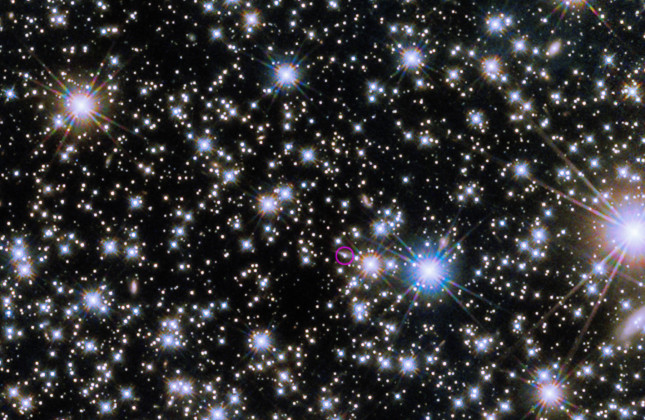The gamma-rays and X-rays from the outburst provide new insight into how jets of material are accelerated, and even illuminated 20 dust clouds in our galaxy. But a mystery remains. The remains of the exploded star that caused the gamma-ray burst seem to have disappeared without a trace.
GRB 221009A as the flash is called was first reported when the Neil Gehrels Swift Observatory detected X-rays on Oct. 9, 2022. The source turned out to be in our Milky Way, not far from the galactic center. However, more data from Swift and the Fermi Gamma-Ray Space Telescope soon suggested it was much further away. Observations with the X-shooter instrument on ESO's Very Large Telescope in Chile, led by Daniele Bjørn Malesani from Radboud University, then assigned the outburst to a much more distant galaxy that just happens to be behind ours. “The burst occurred two billion light years away, but for a gamma-ray burst, that is in our backyard. Such a powerful GRB, so close – that is rare”, said Malesani.
The fact that the gamma-ray burst was about two billion light-years away means it had to be exceptionally bright. "The difference between a typical eruption and this one is about the same as the difference between the lightbulb in your living room and the floodlights in a football stadium," said Andrew Levan of Radboud University, who used the NASA/ESA James Webb Space Telescope to investigate the aftermath of the explosion.
Statistically, a gamma-ray burst as bright as GRB 221009A only occurs once in many thousands of years. It may be the brightest burst of gamma rays since the dawn of human civilization. Calculations show that the gamma-ray burst released about a gigawatt of energy into the Earth's upper atmosphere for a few seconds. That is the equivalent of the energy production of a terrestrial power station. "So much gamma and X-rays were emitted that they stimulated the Earth's ionosphere," said Erik Kuulkers, ESA project scientist for Integral, one of the telescopes that detected the GRB.
A large amount of data from completely different instruments is now being brought together to understand how the original explosion happened, and how the radiation interacted with other matter as it traveled through space. One area that has already yielded results is the way X-rays have illuminated dust clouds in the Milky Way. The radiation traveled through intergalactic space for about two billion years before entering the Milky Way. The radiation encountered the first dust cloud about 60,000 years ago, and the last about 1,000 years ago.
Whenever the X-rays encountered a cloud of dust, it scattered some of the radiation, creating concentric rings that seemed to expand outward. ESA's XMM-Newton observed these rings several days after the GRB. The closest clouds produced the largest rings, simply because they appear larger from perspective.
An Italian team has analyzed dust clouds and compared them with existing models. They found that one model reproduced the rings particularly well. In this model, the dust grains consisted mainly of graphite, a crystalline form of carbon. They also used their data to reconstruct the X-ray emission from the gamma-ray burst itself, because that specific signal was not directly observed by any instrument.
But it remains a mystery which object exploded and caused the gamma-ray burst. Levan and colleagues used the NASA/ESA James Webb Space Telescope to search for the aftermath of the explosion - and found nothing. "That's strange," he says, "and it's not entirely clear what it means. It could be that the star was so massive that it immediately formed a black hole after the initial explosion, swallowing the material that would form the cloud of gas known as a supernova remnant.”
So there is a lot of follow-up work to be done. Astronomers will continue to search for the remains of the exploded star. Among other things, they will hunt for traces of heavy elements such as gold, which they believe are created in such heavy explosions.
